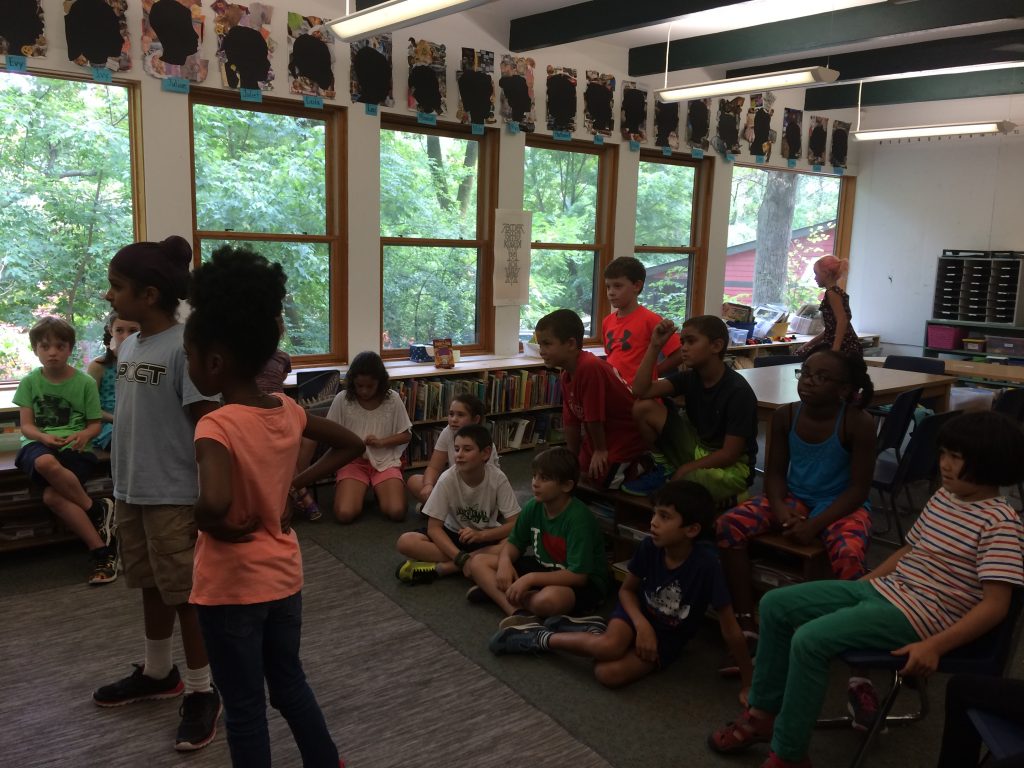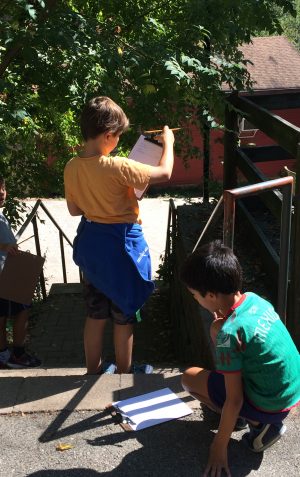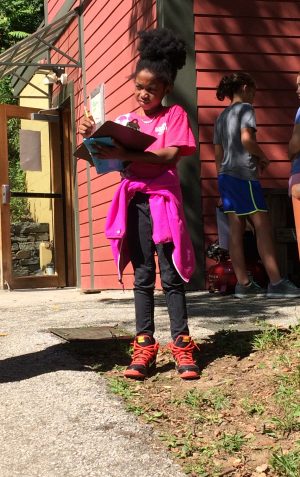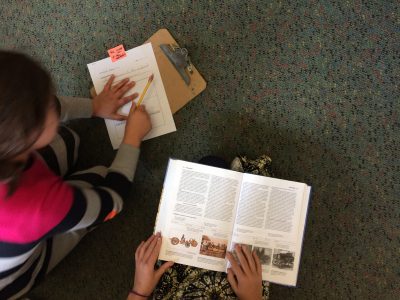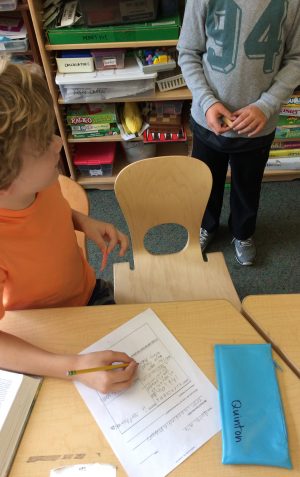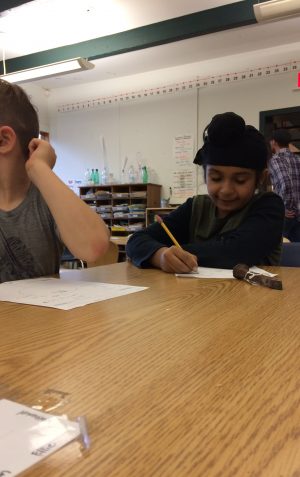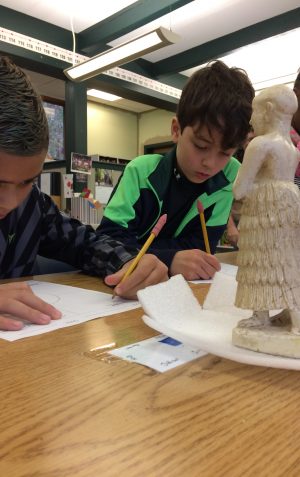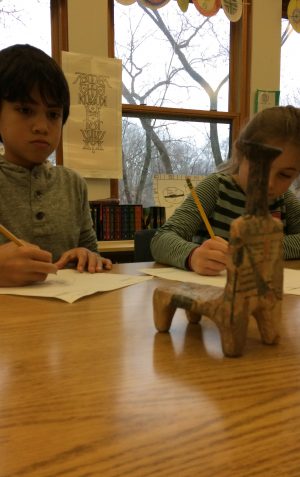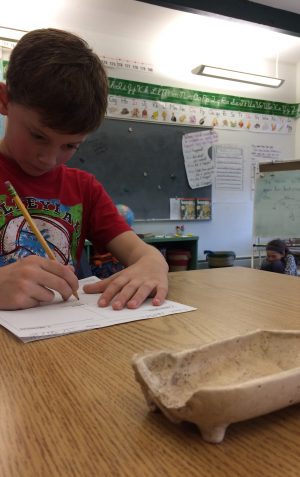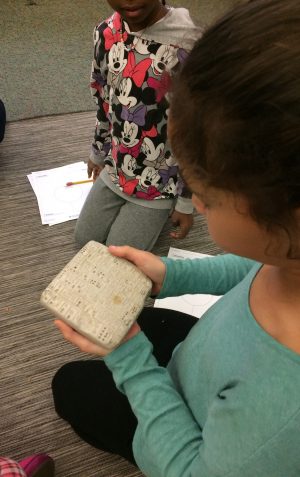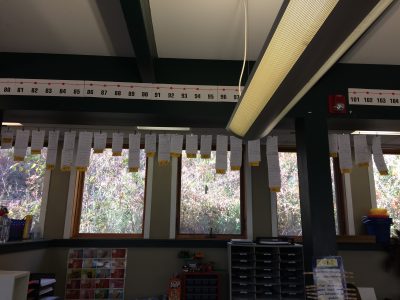Investigating How Inventions Impacted Ancient Civilizations
This year, the 3/4 groups are studying how inventions drive civilizations. Specifically, we are looking at how people from long ago used resources available to them, and how they created inventions to solve problems of their time. Through role playing, tinkering, and researching, 3rd and 4th graders are getting a deeper understanding of what life was like before the technology of today and how to be problem-solvers themselves. While students are better understanding the past, they are also developing a strong foundation to critically think about how they can solve modern real-world problems through inventions.
The Concept of Time
We first explored a system for telling time. Marie and I challenged the group to think about their daily lives without a watch, clock, iPad, cell phone, etc. How would this change their day to day experiences? What would they have to rely on? In groups, 3rd and 4th graders were given different scenarios and they were challenged with finding solutions to navigating daily life without the words for “day,” “night,” or even “noon” to either meet friends, to serve dinner, or to know when to feed their livestock. In small groups, teams brainstormed skits, came up with characters and made creative plans so that they could all follow through on their responsibilities. We quickly realized that describing dinner as being served at “sunset” wasn’t specific enough because the sun sets for a duration of time and some people might miss their meal. So, more precisely, it was described as “when the sky turns a pinkish yellow-red.”
Members of the group also realized that they could use shadows to tell the time, and so we began our hunt for sundials around Miquon’s campus. They ventured outside; kids traced shadows and wrote down the time they observed them. Later on, they went back outside to see how the shadows had changed and noticed that even just after 10 minutes or so, the shadows had shifted!
Later on, the group began creating their own sundials and took them out periodically to see how the shadow had shifted throughout the day. Through this practice, the group quickly realized that although it would have been hard without modern technology to help us tell time, it wouldn’t have been impossible. And, in fact, some of the most useful inventions came from resources people had on hand.
Moving through our exploration of Time, we began to focus our attention on a timeline. One of the most difficult aspects of studying the past is really getting comfortable and familiar with something that happened so long ago. Getting the group acquainted with just how far back ancient civilizations existed, we thought about it in relation to other inventions, people, and events. In partners, 3rd and 4th graders researched important events, people, and inventions throughout history spanning centuries.
Following some scaffolding (e.g., support) on how to research in an encyclopedia, pairs were sent off to research their own topics of choice: the invention of the first automobile, the signing of the Declaration of Independence, Amelia Earhart, the Civil War, and the first Olympics, to name a few. After researching important details for each, the group presented their findings and organized their work chronologically throughout time. Students used what they knew about a number line to make sense of time passing throughout history. They also developed the foundational skills in taking notes and doing research, which is critical for their study of ancient civilizations.
Ancient Mesopotamia
After surveying the group about which ancient civilization they were most interested in exploring together, we turned our focus to the inventions of Ancient Mesopotamia. The Penn Museum provides schools with “loan boxes” of artifacts for kids/adults to observe. After ordering our loan box, our group explored replica artifacts from Ancient Mesopotamia and began to ask questions. What would this be in modern times? What did people in Mesopotamia use this for? How did this serve people in their day to day life? With a close eye, students observed, speculated, and made inferences about the ancient artifacts.
Through observing, speculating, researching, and tinkering students will have a strong foundation to dive into the exploration of different time periods through the lens of analyzing inventions. After winter break, check back for more information about how our 3rd and 4th graders will turn into research teams, as they each take on a specific time period, looking at the needs of people of that time, how environment impacts what people had and what they needed, what writing systems were created to foster communication, and what inventions were created to solve real-world problems of ancient times.
